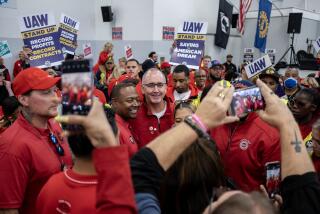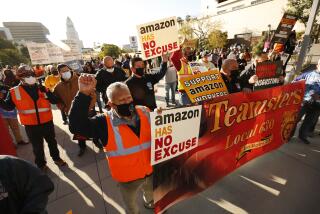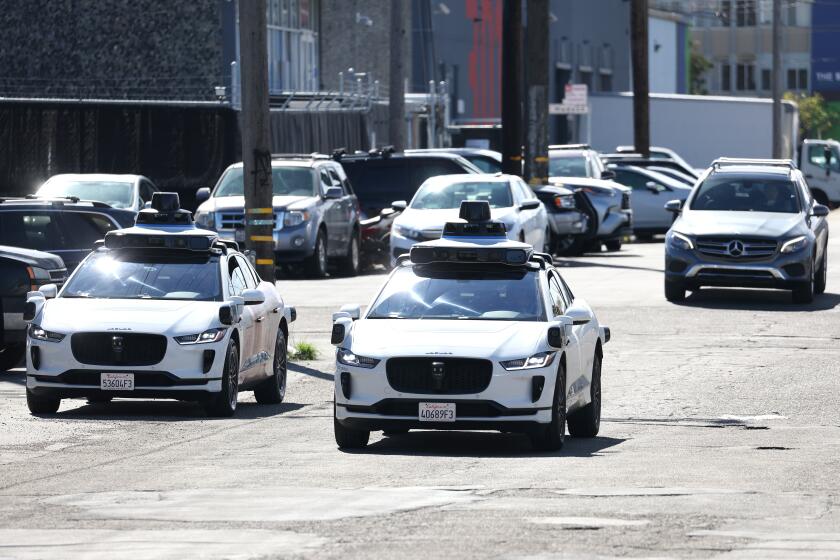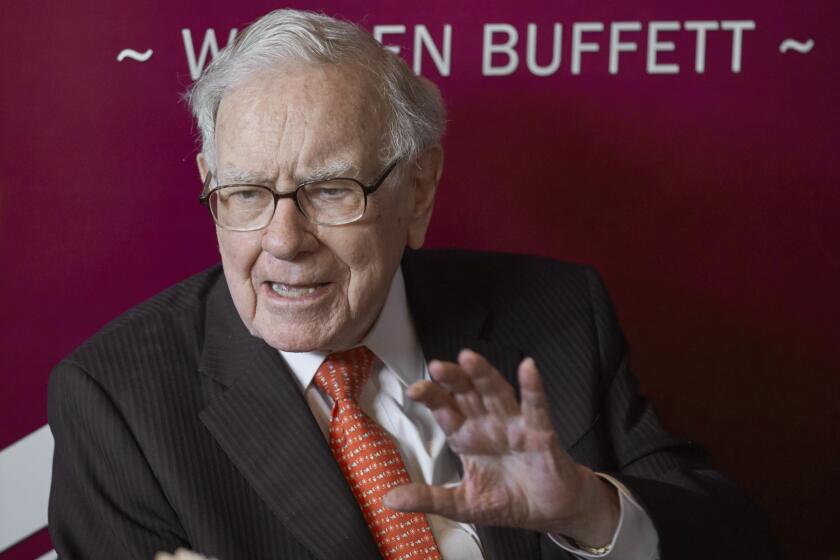Employee-Owners Have United on the Ascent Again
- Share via
SAN FRANCISCO — For a clear picture of the American worker today, under pressure, threatened by competition at every turn, yet capable of great accomplishment and even of making a buck or two, look to employee-owned United Airlines.
The employee stock ownership plan (ESOP) that bought 55% of UAL Corp.--United’s holding company--in exchange for wage and work-rule concessions in July, 1994, could well provide an alternative model for companies in trouble, showing them how to expand rather than downsize, hire rather than fire and make employees true partners in the business.
To be sure, United’s ultimate success was not yet assured as the ESOP passed its first anniversary last week. There was much debate about who is happy and who isn’t at the company.
But happy is a childish word. What United employees really have a year after their buyout is survival, respect, a measure of job security and the sense of victory.
The buyout, financed by UAL debt to be repaid over six years as employee stock vests in the ESOP, was a desperation move. Without it, United might have broken up into regional lines.
The company was in peril financially and competitively. It had lost $800 million from 1991 to 1994 and was losing out to scrappy Southwest Airlines in West Coast markets. A retreat from California would have left United’s Asian routes vulnerable.
“Stephen Wolf (UAL’s former chairman) said we had three choices: Downsize and lose jobs, or take the ESOP and actually expand, or do nothing and hope for the best,” recalls Ralph Martenson, boss of United’s new Shuttle on the West Coast.
Shuttle by United is the low cost airline-within-an-airline that resulted from choosing the ESOP option. Started last October, it has expanded to 374 flights a day and is winning its share of market battles with Southwest.
Shuttle plays Southwest’s game, achieving economies by fast turnaround of aircraft, high flight frequency and by serving only pretzels and drinks on all flights. To do that well takes motivated employees. At Shuttle’s San Francisco base, flights are up to 119 a day from 78 when the service began. Yet Shuttle gets by with one manager and four team advisers, dispensing with at least 10 supervisory positions.
Mechanics, pilots, customer service representatives and ramp workers--who load, unload and clean aircraft--work in teams. They describe their work today as much better than it used to be. “We help each other now, not like before when it was you do your thing, I do mine,” says Cathy Baker, a customer service rep here at San Francisco International Airport.
“I help throw baggage now if need be,” says Troy Van Dongen, mechanics team coordinator. “I couldn’t do that before.”
More than generosity is operating. The ESOP guaranteed workers no layoffs for six years, relieving the job insecurities that get in the way of teamwork.
And United’s employees are smart enough to know they’re protecting well-paying jobs. “Everybody knows this is a good deal,” says mechanic Richard Ramsteadt.
Even after cutting their own pay by more than $3 an hour, mechanics make $22 an hour. Ramp workers make $12 an hour after giving up $2 per hour. But low-cost start-up airlines such as Valu-Jet Airlines pay half those rates. The market place is tough these days.
But productivity can pay off. Southwest Airlines pays top rates and achieves economies through productive work, as the United Shuttle is doing. UAL management says the Shuttle will make a profit this year.
And United Airlines overall, the $15-billion in revenue company that flies to 152 cities in 30 countries, is recording rising profitability for the first time in years, notes Richard Bail, a director of Houlihan Lokey Howard & Zukin who helped set up the ESOP.
What United’s employees have done with the Shuttle should not be taken for granted. More than keeping their jobs, they have built another economy-priced air service. Southwest, the innovator of short-haul economy, is doing well also.
And both lines employ well-paid productive U.S. employees--although newly hired United employees are being brought in at lower wages and benefits.
“The equity ownership gives employees a stake in success and makes restructuring possible,” says Joseph Blasi, professor of labor relations at Rutgers University and co-author of “The New Owners,” a book about the rise in employee ownership.
Downsizing would not have done that. Rather it would have exacerbated insecurities and prevented expansion. In fact, United had cut personnel sharply in an earlier economy drive and found itself losing business due to a shortage of reservation agents.
Stock ownership is apportioned on how much of a pay cut each employee group took, but it’s safe to say that when their stock becomes tradable in six years employee owners will have nest eggs ranging from $50,000 to several hundred thousand dollars--if United stock performs as it did before the downturn of the early 1990s.
Productivity ain’t paradise. “Work is hard. Turning a flight around in 20 minutes and then increasing the number of flights, we get burnouts,” reports Hazel Nassar, customer service supervisor.
Ownership also means hard decisions. The flight attendants alone did not come in on the ESOP. Their union saw it as something the pilots and mechanics were shoving on lower paid employees. But the flight attendants will be asked to join the ESOP when their contract comes up next March, because their presence would make the stock payoff come sooner for all.
“If they refuse and go on strike,” warns mechanic and owner Ramsteadt, “the ESOP owners will hire other attendants to replace them.”
Solidarity is adjustable. The mechanics want to form their own union, separate from the International Assn. of Machinists which groups them with ramp workers. Would that disrupt the teamwork that is making United successful? It shouldn’t. As owners, employees have more of a stake than ever in cooperation and success, as such employee-owned companies as Avis, Herman Miller office furniture and Parsons engineering have shown.
However, the reason ESOPs aren’t more widespread--and United’s is a major test case--is that a good labor contract traditionally was better than ownership for employees. That way they didn’t shoulder the dual risk of having their job and investments in the same company.
But good labor contracts didn’t protect employees from dramatic change, most notably in the airline business. If employees are going to face the risks of a changing world, they’re better off having a vote in their own destiny--and a chance at the rewards of change as well.
(BEGIN TEXT OF INFOBOX / INFOGRAPHIC)
Friendly Skied, Indeed
UAL stock lagged after the employee buyout in July, 1994, but has risen since March, when investors saw the airline getting its costs under control.
Friday’s Close: $148.75
Source: TradeLine
More to Read
Inside the business of entertainment
The Wide Shot brings you news, analysis and insights on everything from streaming wars to production — and what it all means for the future.
You may occasionally receive promotional content from the Los Angeles Times.










